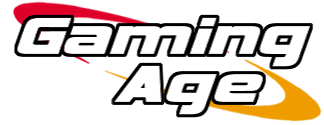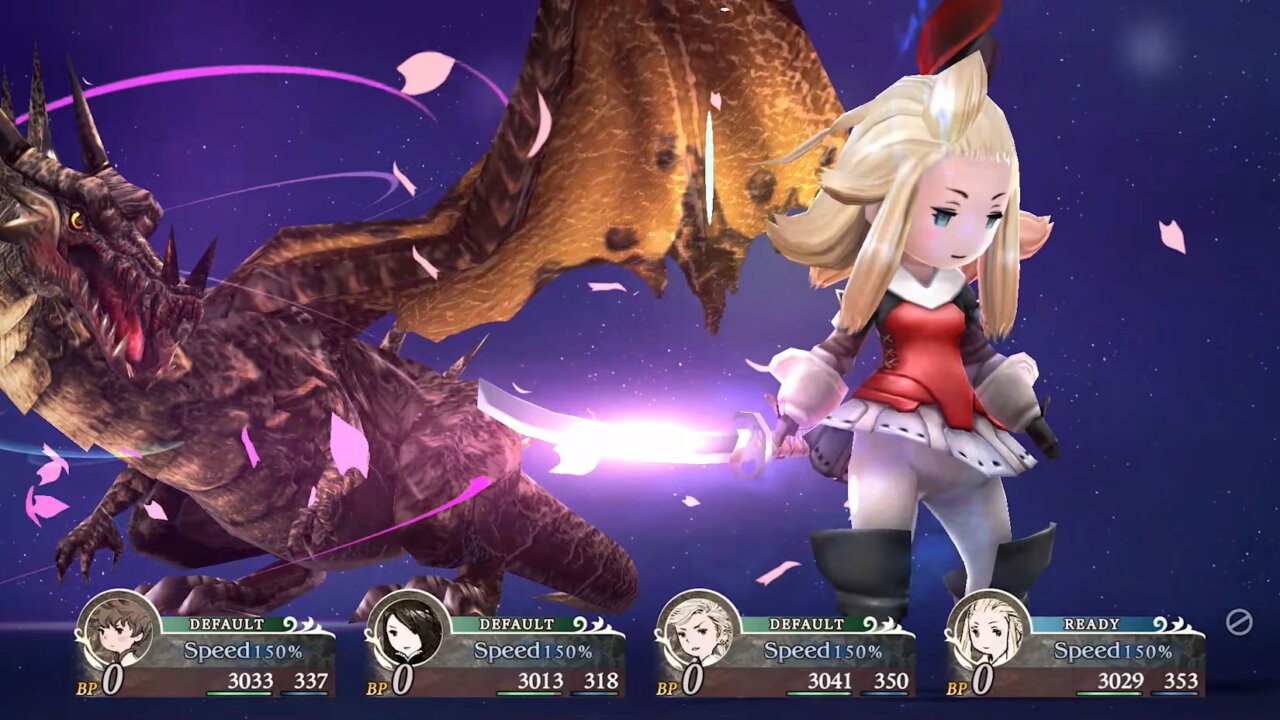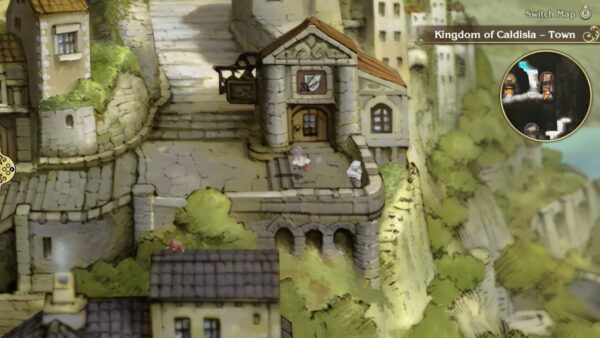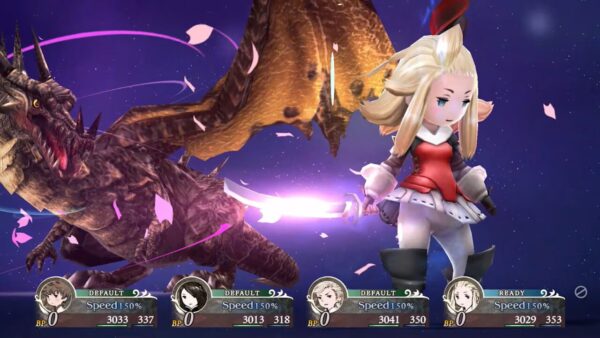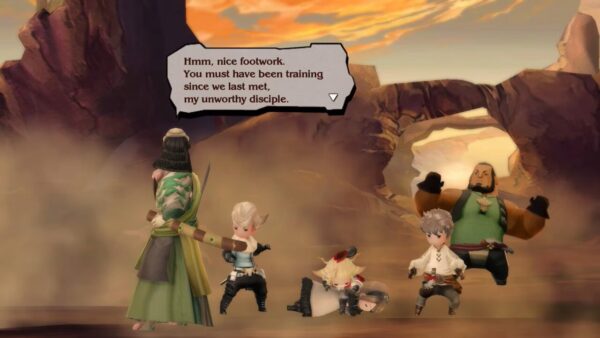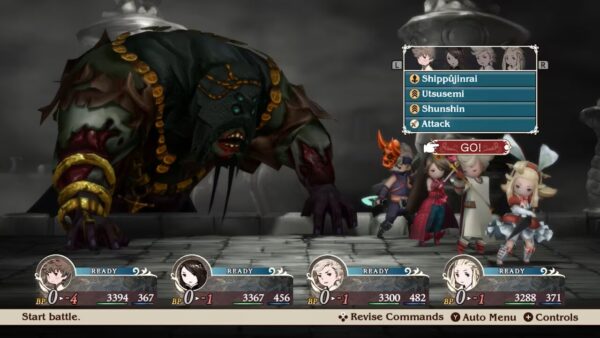Publisher: Square Enix
Developer: Cattle Call Inc.
Medium: Physical/Digital
Players: 1
Online: Yes
ESRB: T
Originally a title for the Nintendo 3DS that is known for its unique twist on the standard turn-based combat JRPG, Square Enix’s Bravely Default would go on to create two sequels, the basis for the Octopath Traveler games, and most recently a remaster in Bravely Default Flying Fairy HD Remaster on Nintendo Switch 2. The Flying Fairy Remaster is being released for the original price that Bravely Default had on the 3DS of $40USD before tax. The remaster improves almost all aspects of the game from the original, and the few inconvenient changes that were noticed can actually be fixed later on in the game.
Now, I will start this review off by saying that I have not fully completed the original game, so some of the details of what changes from the original game and the HD Remaster related to later parts of the game have been provided by trusted individuals who gave me the information as they played through the game. One of the first things that was noticeable was the visual and audio upgrades. The sheer hardware upgrades from the Switch 2 compared to the 3DS should not make this surprising at all but how smooth the character models were was very noticeable during a first impression.
In addition, while the game did keep its painting-esque backgrounds you’ll notice the fact that they redid all of them instead of just porting and resizing from the original game. You’ll experience a beautiful soundtrack created by Revo during your journey through Luxendarc that while good on the 3DS really gets to shine on the Switch 2.
Speaking of the music, Flying Fairy Remaster has introduced 2 minigames played using the mouse functionality of the Joy-Con 2 that can be played when the party enters the Florem region of the continent. The first one that will be discussed is the Luxencheer Rhythm Catch. Luxencheer Rhythm Catch is a rhythm game in which you use the Joy-Con 2 to collect score by using the line connecting your cursors to line up with circles, click dedicated flowers with the mouse button, and bring the cursors together for the line bars. The other minigame is Ringabel’s Panic Cruise, in which you go through a set course on your airship while completing commands that party members give you with some sort of boss battles at the end. Both of these minigames do not really stand out but some of the rewards for playing them does. When you complete the minigames you can get tokens to exchange different items for your party. These items range from the costumes originally removed from the US release of the 3DS game, accessories that can affect encounter rates in a way that was initially available in the original release, some middle of the road equipment, the Limit Break Ward which allows the damage cap to go above 9999, and it is also the only way to get a Ribbon in either version of the game. The reward rate makes these minigames very grind heavy so it is not recommended unless you really enjoy this content.
The main gameplay of the game is more or less the same from the original version. The Brave and Default system is unchanged, the jobs still have the same stats and abilities, all job combinations work just as well as they did in the original, though unfortunately the story related boss rush loop is the same. One of the differences in the gameplay loop from the original is encounters. In the 3DS version you were able to change the rate at which you encounter enemies on the overworld and in dungeons at the rate of 200%, 100%, or 0%. This made it easy for if you wanted to avoid encounters all together if for example you were low on resources and HP you can turn off encounters until you got to an inn or the adventurer in dungeons to heal.
In the HD Remaster however you only have the option to set it to the lowest option of 50% without the accessory mentioned in the minigame segment above, making it a bit inconvenient at times. If you are playing a no exp, no JP, or no money run do note that those can still be turned off in the config settings. In addition, if you are still looking for an extra challenge the nemesis superbosses can still be fought by using a nightmare pillow while resting at an inn, which are obtained from the asterisk holder refights.
The last major change that is noticeable is how the Norende side mode works. This was originally the StreetPass functionality in the 3DS version but in the Flying Fairy Remaster this a more streamlined process. After unlocking Norende there is a chance to find a passing soul in a town, symbolized by a ghost-like effect of the NPC and they have flowers popping out of them. The amount of passing souls you can get varies where some people will get 3 passing souls in a visit while others would not find any, and they reset every few hours. These passing souls then are sent to Norende where they spend real time working on rebuilding shops that when fully upgraded give some great equipment and outfits. Putting multiple villagers to work at the same shop will decrease the amount of time needed to finish the upgrade and can be changed at any time. Lastly, to those who know what the time manipulation feature can do to adjust other Switch games, it does work for Norende.
If you are a fan of turn-based JRPGs, games with a lot of customization, or a simple story done really well Bravely Default Flying Fairy HD Remaster is a great game that has a lot of great gameplay, a fun combat system, and a lot of different ways to be able to create your party if you want to replay the game. It is a game that has had such a consistent following for a very long time that I would keep on your radar, even if the midgame can feel a bit repetitive and grindy.
Note: Square Enix provided us with a Bravely Default Flying Fairy HD Remaster Switch 2 code for review purposes.
